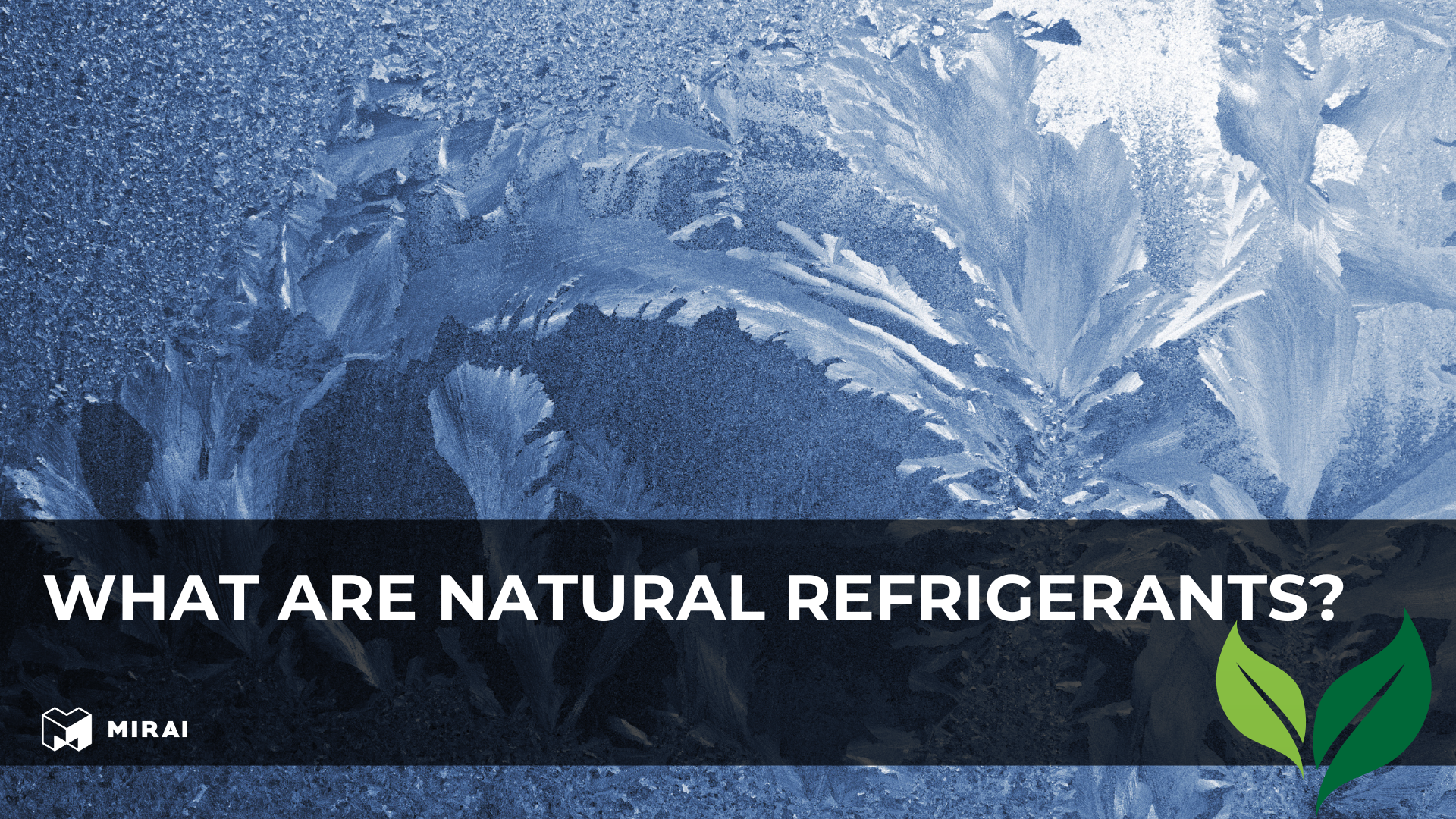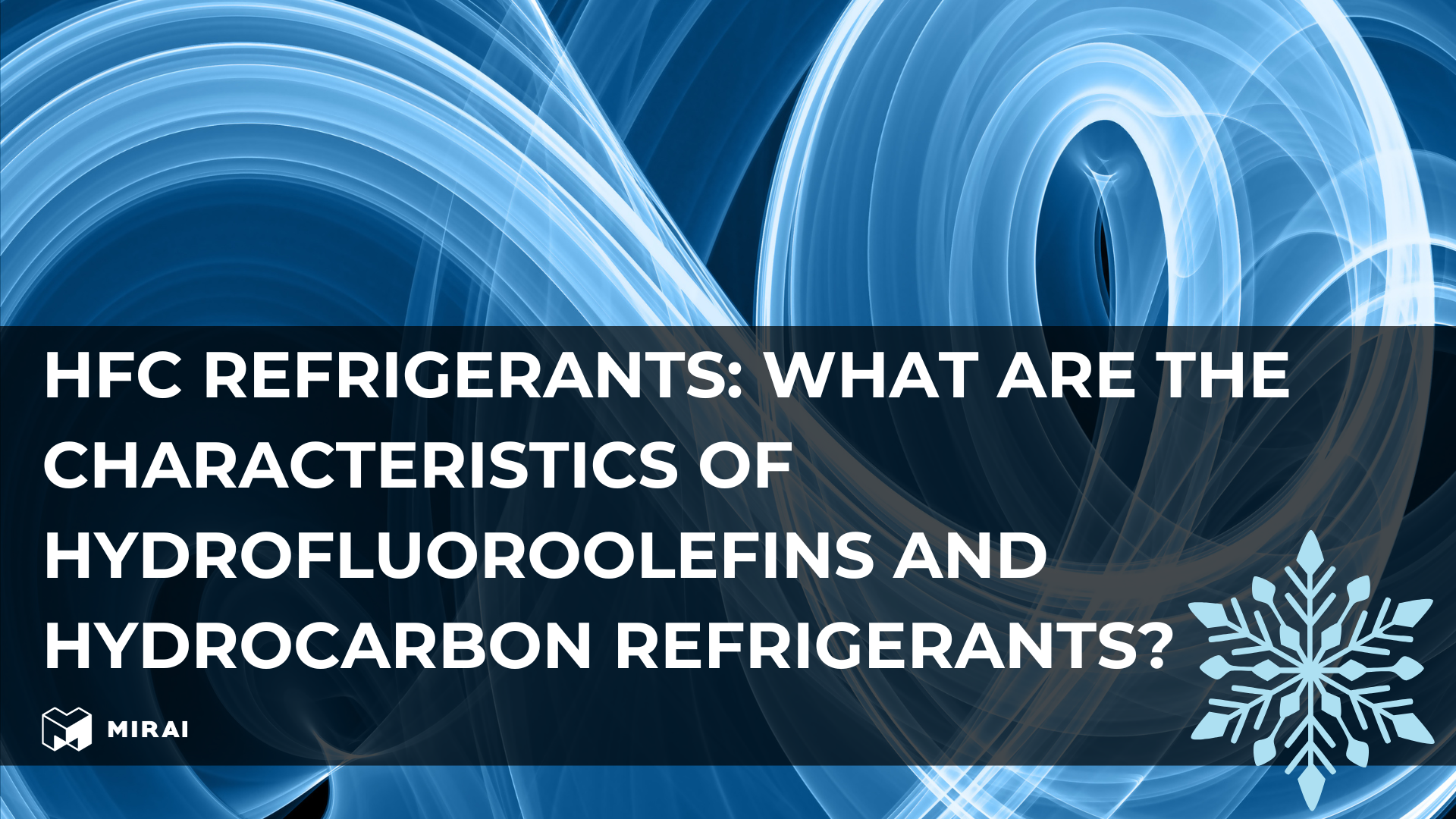What Are Natural Refrigerants?

Natural refrigerants are naturally occurring substances in nature that are utilized in refrigeration systems, air conditioning, and heat pumps. Natural refrigerants, unlike synthetic refrigerants with high Global Warming Potential (GWP) and ozone depletion potential, are an eco-friendly option. Natural refrigerants are derived from natural sources and are well-known for having zero impact on the environment. Natural refrigerants in widest use today, well known list of natural refrigerants such as ammonia (R-717), carbon dioxide (R-744), hydrocarbons such as propane (R-290) and isobutane (R-600a), water (R-718), and the most promising of all—air (R-729).
The Application of Natural Refrigerants
Natural refrigeration methods have applications in various fields, including commercial and industrial refrigeration. However, their significance is most acutely experienced in the pharmaceutical sector, where temperature control is of paramount importance. The majority of pharmaceutical items, including vaccines, biologics, and chemical reagents, degrade when exposed to temperature fluctuations.
Among the several natural refrigerants, air (R-729) is emerging as one of the most promising pharma refrigeration solutions. Air-based refrigeration systems offer several advantages like zero environmental impact, complete safety, and unlimited availability. Compared to other natural refrigerants, air is nontoxic, nonflammable, and has zero GWP, making it the perfect green refrigerant for commercial and industrial applications.
Air refrigeration systems can be particularly valuable for ultra-low temperature applications required for pharmaceutical storage and transport. Companies wishing to reduce their environmental impact while ensuring strict temperature control should turn to air as the future of refrigeration technology.
Different Types of Natural Refrigerants
Air (R-729) - The Future of Refrigeration
Air is the most sustainable refrigerant, with zero GWP, non-toxicity, and absolute safety. Unlike synthetic refrigerants, it requires no chemical processing and poses no environmental risks.
Mirai Intex’s air refrigeration systems use an air-cycle process, where ambient air is compressed, cooled, and expanded to produce ultra-low temperatures. This makes it ideal for pharmaceutical storage, blood plasma freezing, cryogenic freezing, food preservation, semiconductor manufacturing, freeze-drying systems ensuring precise temperature control without toxic or flammable substances.
As regulations phase out high-GWP refrigerants, industries are adopting air-based refrigeration for its efficiency, safety, and environmental benefits. Mirai Intex leads this shift, providing high-performance, sustainable cooling solutions for the future.
Hydrocarbon Refrigerants (HC)
Hydrocarbon refrigerants like propane (R-290) and isobutane (R-600a) are widely recognized as environmental-friendly alternatives to synthetic refrigerants. They have very little environmental impact, with no ozone depletion potential and low Global Warming Potential (GWP). As a result, hydrocarbons are increasingly being used in domestic refrigeration, commercial cooling systems, and even in certain industrial applications where sustainability is favored.
However, the primary problem with hydrocarbon refrigerants is that they are extremely flammable. The materials are highly combustible, requiring special safety measures, leak detection, and ventilation to prevent the risk of fire. Due to these risks, regulatory restrictions limit their charge size in certain applications, making large-scale industrial application more complicated.
Ammonia (R-717)
Ammonia is one of the most popular natural refrigerants. It has zero GWP and excellent thermodynamic properties, and is in wide use in industrial refrigeration and pharmaceutical storage. Ammonia is toxic and requires special handling and safety measures to avoid and reduce the risks that may arise.
Carbon Dioxide (R-744)
Carbon dioxide is gaining popularity as a refrigerant due to its low GWP and non-flammability. It is being widely used in commercial and industrial refrigeration, including supermarket refrigeration and pharmaceutical storage. The main challenge with CO2 is that it operates at high pressure, so special refrigeration system designs are needed.
Water (R-718)
Water has also been studied as a refrigerant due to its zero GWP and non-toxicity. Due to its high boiling point, its use is mostly limited to absorption refrigeration systems rather than traditional vapor compression cycles.
Advantages of Air as a Natural Refrigerant
- Zero Environmental Impact: Air has a GWP of zero and does not deplete the ozone layer.
- Safety: Unlike hydrocarbons and ammonia, air is totally non-flammable and non-toxic.
- Unlimited Availability: Air is abundant and does not have to be manufactured, thus it is an infinitely renewable refrigerant.
- Appropriate for Ultra-Low Temperatures: Air-based refrigeration systems can achieve temperatures far lower than other refrigerants can withstand, making them well-suited for application in pharmaceuticals.
Disadvantages and Limitations
Energy Consumption: Air refrigeration systems require efficient insulation and compression technologies to provide maximum efficiency. But Mirai Intex designed refrigeration systems that are efficient and have low operational costs.
The Problem with Chemical Refrigerants
Man-made refrigerants such as Chlorofluorocarbons (CFCs), Hydrochlorofluorocarbons (HCFCs), and Hydrofluorocarbons (HFCs) have been widely used in refrigeration and air conditioning systems for decades. While they were previously considered revolutionary, their extreme environmental effects have led to global bans and the search for sustainable alternatives.
Ozone Layer Depletion: Both CFCs and HCFCs contain chlorine, which, when released into the atmosphere, annihilates ozone molecules. Depletion of the ozone layer results in excessive exposure to UV radiation, thereby leading to high rates of skin cancer, cataracts, and environmental damage.
High Global Warming Potential (GWP): Although HFCs do not damage the ozone layer, they have very high GWP, contributing significantly to climate change. The GWP of certain HFCs is several thousand times greater than CO2, with the potential to trap heat in the atmosphere and increase global warming.
Regulatory Constraints: International agreements such as the Montreal Protocol and the Kigali Amendment are phasing out synthetic refrigerants due to their detrimental effects. Governments worldwide are adopting rigorous policies for the production and use of high-GWP refrigerants, compelling industries to transition to natural, eco-friendly alternatives.
Environmental and Economic Costs: The transition from synthetic refrigerants entails retrofitting or replacing existing refrigeration equipment for industries, which is costly. However, the long-term benefits of low-GWP, energy-efficient refrigerants outweigh these short-term expenses by reducing energy consumption and environmental impact.
With environmental concerns and regulatory pressure mounting, the need for sustainable refrigeration technologies has never been more urgent. Natural refrigerants such as air (R-729), carbon dioxide (R-744), ammonia (R-717), and hydrocarbons offer low-GWP, energy-efficient options that are aligned with international sustainability goals. With industries switching to greener technologies, air-cycle refrigeration emerges as one of the most promising solutions for an environmentally sound synthetic refrigerant-free future.
Mirai Intex: Leading Air-Based Refrigeration Solutions
Mirai Intex is revolutionizing the refrigeration industry through the development of groundbreaking air-cycle refrigeration systems. Rather than traditional systems relying on high-GWP refrigerants, Mirai Intex harnesses the unlimited potential of air (R-729) to develop high-performance, environmentally friendly cooling systems. These refrigeration machines are widely used in different demanding applications like pharma storage, freeze-drying system, blood plasma freezing, semiconductor manufacturing and other demanding industries.
Mirai Intex is revolutionizing the refrigeration industry through the development of novel air-based refrigeration systems. Unlike traditional high-GWP refrigerant-based systems, Mirai Intex harnesses the unlimited potential of air (R-729) to develop sustainable high-performance cooling systems.
Mirai Intex's innovative air refrigeration systems offer:
- Zero Environmental Impact: The use of air replaces toxic chemical refrigerants, minimizing carbon emissions.
- Ultra-Low Temperature Capabilities: Ideal for medical and pharmaceutical uses where extreme cooling is required.
- Enhanced Safety: As compared to poisonous ammonia or combustible hydrocarbons, air is the most secure refrigerant.
- Energy Efficiency: New compression technology makes Mirai Intex air refrigeration systems highly energy efficient to be used in industrial and commercial establishments.
By embracing air as a refrigerant, Mirai Intex is setting a new standard for sustainable high-performance refrigeration systems. As industries seek to embrace lower environmental impact solutions, air-based refrigeration stands out as the most viable technology for the sustainable future that lies ahead.

